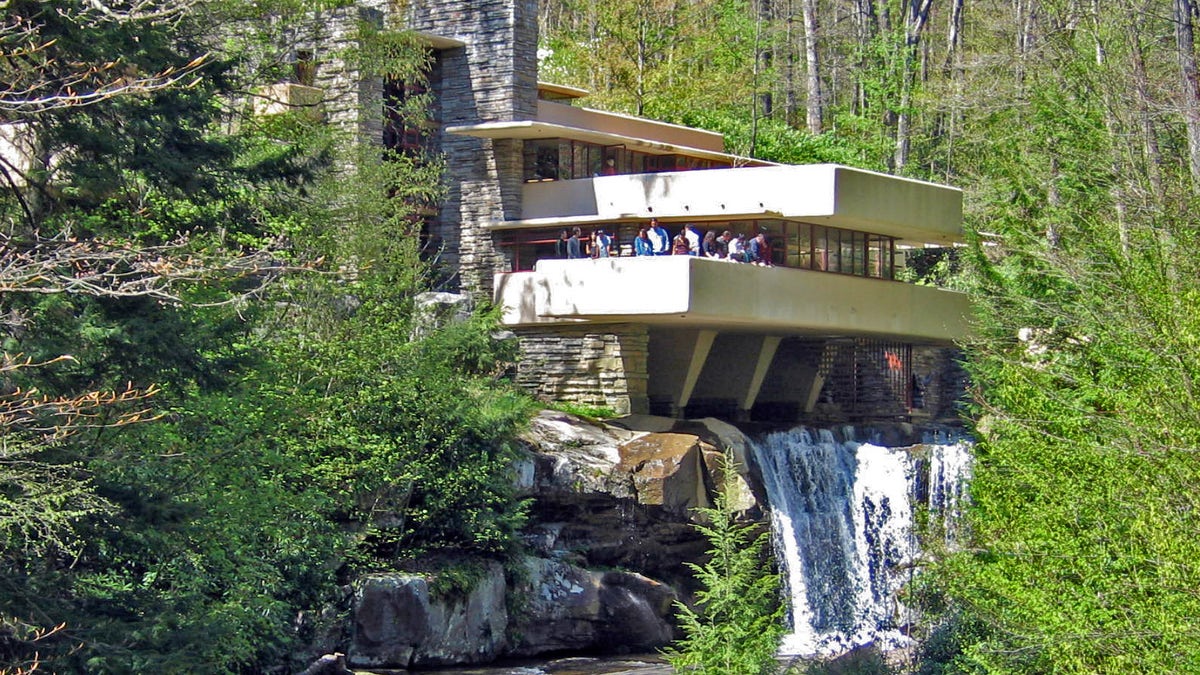
Falling Water house
Having a river or a creek running near your home completes a picture of rustic tranquility -- think of Frank Lloyd Wright's Fallingwater. That is, unless it floods. You don't even have to be near a body of water to experience flooding, as some homeowners in Texas and Oklahoma learned this spring.
If you're buying in a flood plain -- the rather frightening term used to describe areas close enough to rivers, lakes, or an ocean to feel their devastating impact when the going gets tough -- you need to know the rules. Here are four things you need to know before you buy.
Find out if you're in the zone
The Federal Emergency Management Association provides tools for people to calculate whether they are in a high-risk flood area and examine a map of local flood zones.
"You live next to the creek, you expect it to flood," says David Schein, a regional flood insurance specialist in FEMA Region 5 in Chicago. "If you're two, three, four blocks away, you don't expect it. But all creeks flood. All streams flood."
The Wisconsin Realtors Association notes that while flood plains are often found near rivers, lakes, and coastlines, many are low-lying areas where water naturally pools after heavy rains.
Investigate insurance
Banks usually require properties in a flood plain to have insurance in the amount of the loan, up to the maximum of $250,000, says Jeffrey Gleich, an Illinois Allstate agent who writes policies under FEMA's National Flood Insurance Program. Most homeowner insurance policies do not protect against flood damage.
Get friendly with a surveyor who will know your property's flood zone classification. Gleich has a client who fought FEMA for years because he has a couple of square yards located in a flood zone.
The bank is adamant that he needs coverage. "He's gone back and forth with elevation certificates," says Gleich.
Ask about flooding
In most states, sellers must disclose if there are any water leakage issues of any type. So you'd think you'd know if there was a problem. Sometimes disclosures can be tricky to interpret. Talk to a property casualty agent if you're buying near a body of water -- even if you're on the fringes of the flood plain.
"Your agent may say you're outside the flood plain [and] don't need flood insurance," says Schein, but that's only because the bank might not require it. That alone doesn't mean you don't want to shell out for that protection. "People need to look at the available risk information out there and make the appropriate decision."
"If a flood seeps into the basement or entry level of your home, in all likelihood you're going to have a little bit of time to get out the more expensive items like your TV or computer equipment," says Gleich, who sees plenty of people outside high-risk zones who purchase insurance simply for peace of mind.
Employ a home inspector for a second opinion. "They can take a look to see if things are installed correctly," says John Flor, a Realtor with Six Lakes Realty in Chetek, WI. "If it's necessary to have drain tile, if there are any potential water problems there."
Check the rules
Know your flood plain status before you start any new construction. In some places, a setback of a certain distance is required for new construction.
"Different townships say you can't build on a flood plain," Flor says. Flor knows a developer who bought land on a lake. The city told him that as long as the new structure was above the flood plain, he could build, bring in landfill, and elevate the structure.
If everything checks out, full speed ahead! Prepare to enjoy the sound of a babbling brook, and not that of a sump pump going off every 30 seconds.